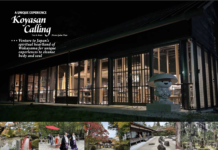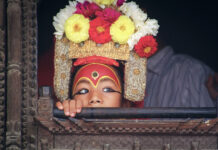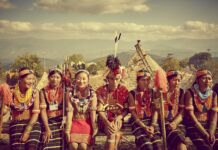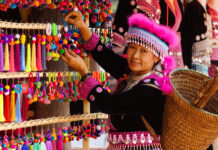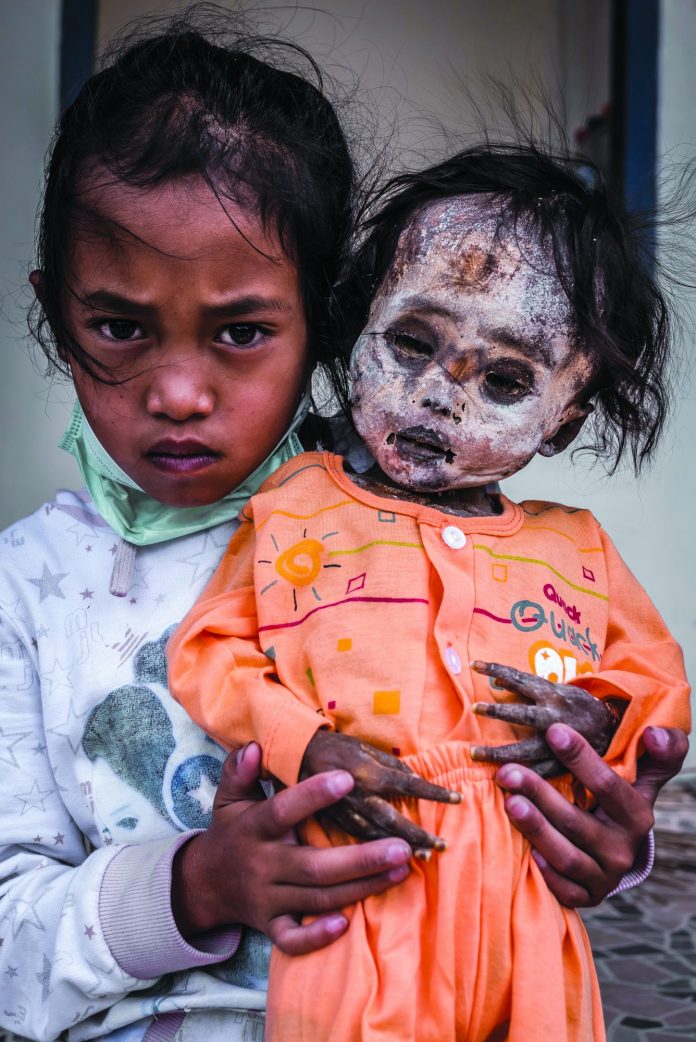
Eternal rest is a lifelong task for the indigenous people of South Sulawesi, who reunite to serve their dead relatives once every few years
Text and Photos Claudio Sieber
Risvan Patale cries for his mummified mummy. But the preservation is intentional. Esther Paseru is considered a toma kula, a deceased person who hasn’t yet been buried, according to the practices of the indigenous people of Indonesia’s mountainous Tana Toraja Regency. From a young age, the members of this community learn to live alongside their dead in a practice known as Aluk To Dolo, or “Way of the Ancestors”, placing food, water and cigarettes near the bodies of late relatives, whom they treat as merely ill.
For Patale’s mother – who died but three days ago from a heart attack – the family makes the Torajan specialty: pork and rice cooked in bamboo, proffered with fresh flowers daily near her withered feet.

It may be several months – or even several decades – before her body will be buried, for a funeral in these mountains is quite the spectacle. Involving the slaughter of tens – sometimes up to hundreds – of water buffalo and the hiring of shamans to guide the spirits of the deceased from the village to heaven, one such production can cost wealthy families up to half a million US dollars. While they slowly save up, the bones of the dead continue hanging out around the tongkonan, or ancestral house, with the odour of formalin used to mummify the body neutralised by dried plants and herbs.

Even after burial, Torajan bodies aren’t consigned to the soil. Every few years, their well-preserved bones are taken out of stone graves by relatives for dutiful polishing, then clothed in updated fashions and carefully returned in a ritual known as Ma’nene. Family members hold feasts to honour the departed, sharing stories of their loved ones at mass reunions.
“Cleaning the corpses is basically like cleaning a room,” says Esram Jaya, who returned from a mining job in Laos for the family’s Ma’nene ritual. “It’s a precious event to honour our ancestors and to gather again.”

According to archaeologists, Aluk To Dolo practices date back 900 years. One source of this bizarre tradition is a tale passed from generation to generation of Toraja: A man named Pong Rumasek was once hunting in the nearby hills when he encountered an abandoned corpse under a tree. After the kind Rumasek wrapped the skeleton in his own clothes and gave it a proper burial, he was blessed with luck and wealth for the remainder of his days. Since then, villagers believe that spirits reward them for acts of charity toward the dead.

Modern practices, like sending the elderly to retirement homes or outsourcing funeral care, will likely shock a typical Toraja. Yet these villagers are by no means unaffected by modern conventions: They use mobile phones, and their youth go to metropolitan Jakarta for studies. Many are beginning to voice unhappiness that these extravagant funerals saddle them with debt and deprive them of pleasures like buying new motorbikes or going on holidays to nearby diving paradise Raja Ampat.

in 2010 at around the age of 70
Says Tato Dena, a Torajan priest: “It’s hard to keep the practices of our ancestors alive, since there are no written records of how to execute them. That there are 7,777 rituals combined doesn’t help.”
Because Aluk To Dolo has never been recognised as an official religion by the Indonesian government, treaties signed in recent decades between Toraja and Christian priests allowing the preaching of the gospel in villages has led most of the population to convert, threatening the continuity of customs like having “weathermen” use their magic powers to keep the skies rain-free for specific funeral hours.

“I intended to hire a weatherman, but my family intervened, saying they prefer praying to Jesus,” says 52-year-old Yohanis at a Toraja funeral for his father in the town of Sereale. “Unfortunately, they are getting too modern for such absurdities.”
Related: Sidewalk Sacrifices
Related: Spiritual Skin
Related: Batik Gets Tech Upgrades
For more stories and photographs from this issue, see Asian Geographic Issue 130, 2018
To see more of Sieber’s photographs, visit his page here


